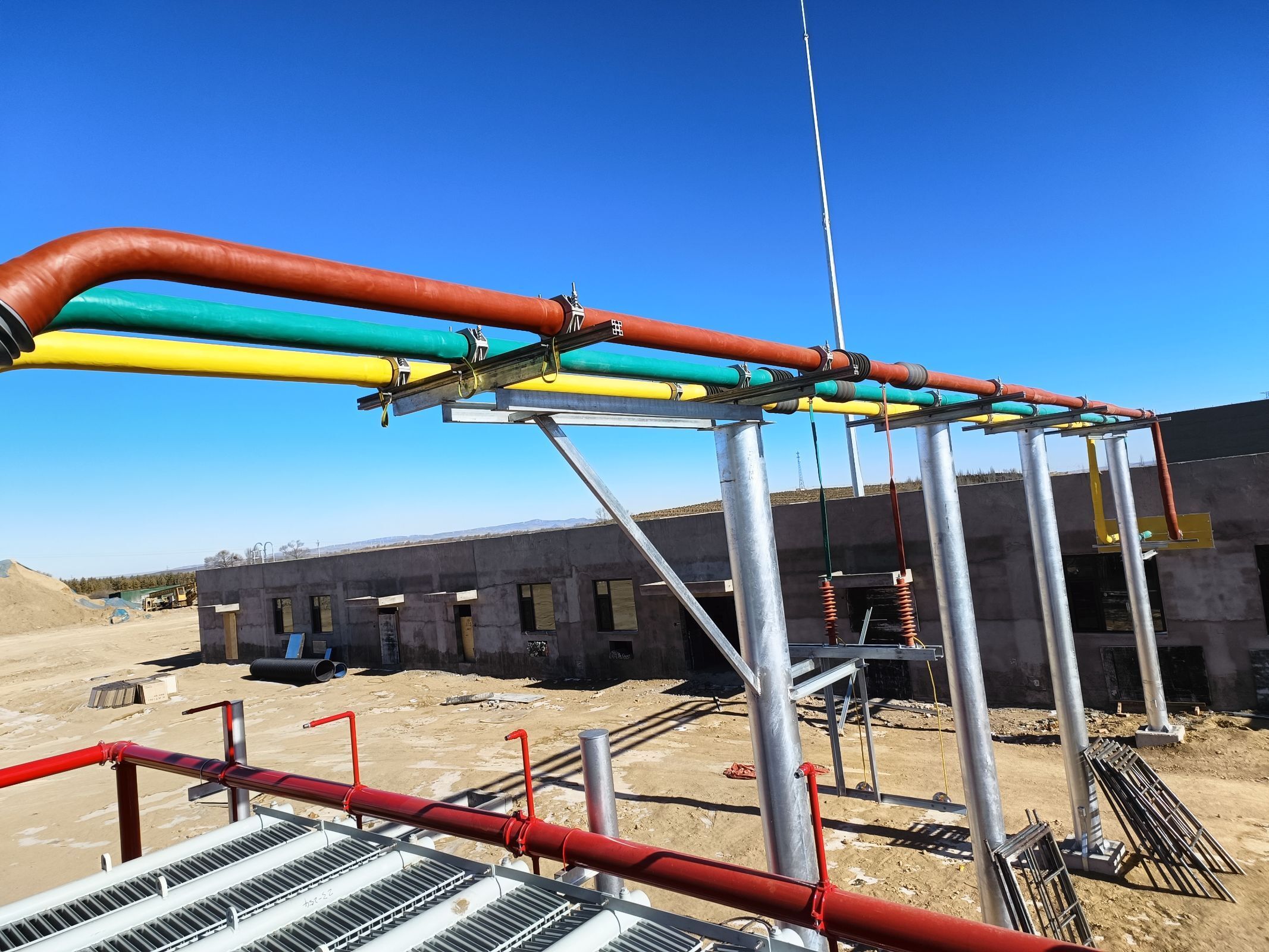
Resin Impregnated Paper (RIP) Busbar
RIP busbars is an industry standard busbar system utilizing epoxy resin impregnated paper as the insulation. The insulation is layered with crepe paper and semiconductor paper layer for capacitive grading. Then epoxy resin is pulled into the paper layers via a vacuum at an elevated temperature to form the insulation layers.
RIP busbars features outstanding electrical properties, due to it being partial discharge free and low dielectric losses.

Ethylene Propylene Diene Monomer (EPDM)
The EPDM busbar’s insulation is composed of Ethylene, Propylene, Diene and Monomer. The EPDM insulation undergoes a one-time extrusion process and is then vulcanized. This production method ensures no voids, which prevents condensation buildup, eliminates moisture, and avoids contact with dirt, dust, or other hazards. The sheathe layer is then added along with the grounding layer.
Our extrusion technique and EPDM insulation guarantees high insulation performance, exceptional temperature resistance, and anti-aging properties, providing an estimated operational lifespan of around 30 years.

EPX Busbar
EPX busbar is crafted using a single-step extrusion method, similar to the renowned EPDM busbar system. The insulation material is extruded while encapsulating the conductor to form a tubular structure. This method ensures a seamless bond with no voids. The absence of voids prevents condensation buildup, eliminates moisture, and avoids contact with dirt, dust, or other hazards.
EPX busbar however diverges from EPDM in its production method as EPX Busbar does not require the vulcanization processes or the degassing, like EPDM does. By omitting these procedures, EP busbar significantly streamlines production, saving time, energy, costs, and materials. Furthermore, EPX busbar boasts the distinct advantage of achieving remarkable busbar lengths, restricted only by transportation and container limitations. The customizable busbar length reduces the need for connectors up to 3-5 times, which in turn reduces costs, simplifies installation, and improves production rate.
Overall, the process is streamlined, efficient and allows room for customization, all the while greatly reducing carbon footprint, price and production time.
Got any questions?
Contact us here!